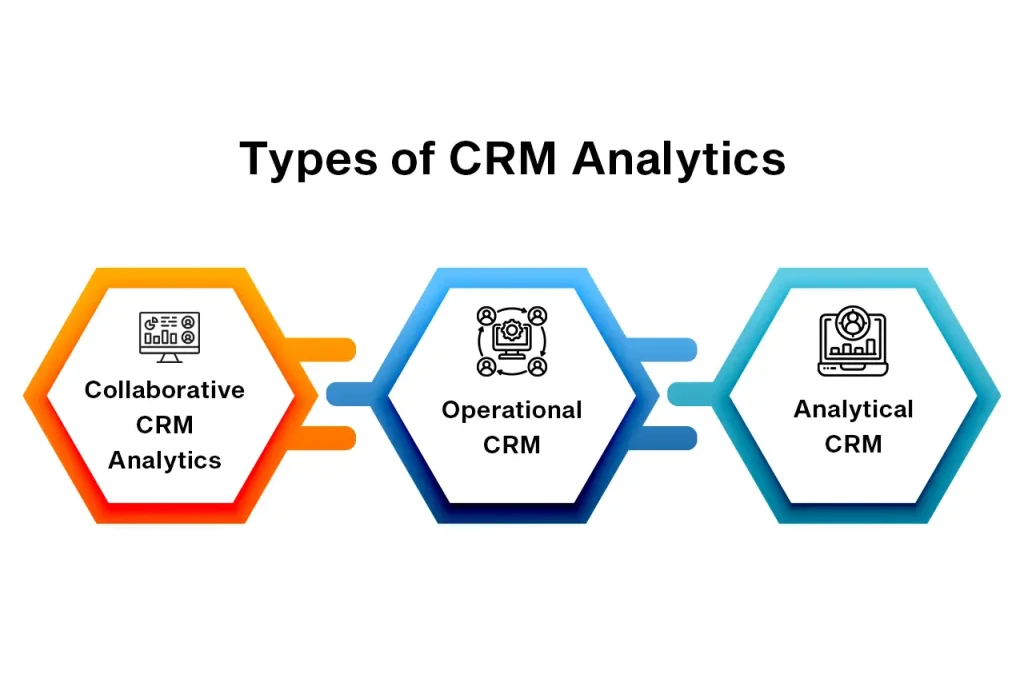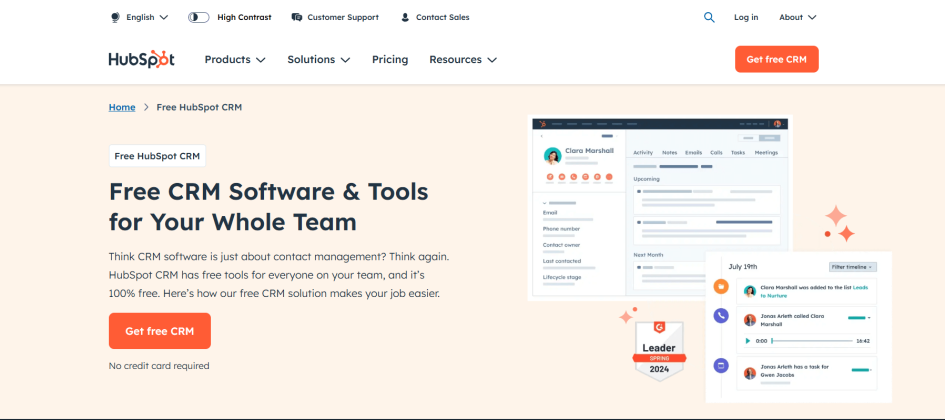
Unlocking Growth: A Comprehensive Guide to CRM Marketing Analytics
In today’s fast-paced business environment, understanding your customers is no longer a luxury; it’s a necessity. And that’s where CRM marketing analytics steps in. It’s the secret sauce that transforms raw customer data into actionable insights, allowing businesses to make smarter decisions, optimize marketing efforts, and ultimately, drive growth. This comprehensive guide will delve deep into the world of CRM marketing analytics, exploring its core components, benefits, implementation strategies, and best practices. Get ready to unlock the power of your customer data and transform your marketing from guesswork to a data-driven powerhouse.
What is CRM Marketing Analytics?
At its core, CRM marketing analytics is the process of collecting, analyzing, and interpreting customer data within a Customer Relationship Management (CRM) system to gain insights into customer behavior, preferences, and interactions. This data is then used to inform marketing strategies, personalize customer experiences, and improve overall business performance. Think of it as a detective work, where you’re piecing together clues from various sources to understand your customers better. The goal is to move beyond intuition and make decisions based on concrete evidence.
CRM systems, like Salesforce, HubSpot, or Zoho CRM, serve as central repositories for customer information. They store everything from basic contact details to detailed interaction histories, including website visits, email opens, purchase history, and customer service interactions. CRM marketing analytics leverages this wealth of data to provide a 360-degree view of each customer.
The Key Components of CRM Marketing Analytics
Understanding the key components is crucial to grasping the full potential of CRM marketing analytics. Here are the essential elements:
- Data Collection: This involves gathering data from various sources, including CRM systems, marketing automation platforms, website analytics tools, social media platforms, and even offline sources like point-of-sale (POS) systems. Data quality is paramount here; the accuracy and completeness of your data will directly impact the reliability of your insights.
- Data Integration: Once collected, the data needs to be integrated into a unified platform. This often involves cleaning, transforming, and consolidating data from different sources to create a single, cohesive view of the customer.
- Data Analysis: This is where the magic happens. Using various analytical techniques, such as segmentation, cohort analysis, predictive modeling, and regression analysis, you can uncover patterns, trends, and correlations within your data. This analysis helps you understand customer behavior, predict future outcomes, and identify areas for improvement.
- Reporting and Visualization: The insights generated from data analysis need to be presented in a clear and understandable format. This involves creating reports, dashboards, and visualizations that highlight key metrics and trends. These visualizations make it easier for stakeholders to grasp the insights and make data-driven decisions.
- Action and Optimization: The final step is to translate the insights into action. This involves implementing changes to your marketing strategies, personalizing customer experiences, and optimizing your campaigns based on the data-driven insights. This is an iterative process, where you continuously monitor, analyze, and refine your approach.
The Benefits of CRM Marketing Analytics
The advantages of implementing CRM marketing analytics are numerous and far-reaching. Here are some of the key benefits:
- Improved Customer Understanding: Gain a deeper understanding of your customers’ needs, preferences, and behaviors. This allows you to create more targeted and personalized marketing campaigns.
- Enhanced Customer Segmentation: Segment your customers based on various criteria, such as demographics, purchase history, and engagement levels. This enables you to deliver more relevant messages to different customer groups.
- Increased Marketing ROI: Optimize your marketing spend by identifying the most effective channels and campaigns. This leads to higher conversion rates and a better return on investment.
- Personalized Customer Experiences: Deliver personalized experiences that resonate with individual customers. This can include personalized product recommendations, tailored content, and proactive customer service.
- Improved Customer Retention: Identify customers at risk of churn and take proactive measures to retain them. This can significantly reduce customer acquisition costs.
- Data-Driven Decision Making: Move away from intuition and make decisions based on concrete data and evidence. This leads to more informed and effective business strategies.
- Predictive Capabilities: Forecast future customer behavior and market trends. This allows you to proactively adapt your strategies and stay ahead of the competition.
- Competitive Advantage: Gain a competitive edge by understanding your customers better than your competitors. This enables you to provide superior customer experiences and build stronger customer relationships.
Implementing CRM Marketing Analytics: A Step-by-Step Guide
Implementing CRM marketing analytics can seem daunting, but with a structured approach, you can successfully integrate it into your business. Here’s a step-by-step guide:
- Define Your Goals and Objectives: Before you start, clearly define what you want to achieve with CRM marketing analytics. What specific questions do you want to answer? What are your key performance indicators (KPIs)? Having clear goals will guide your implementation and help you measure your success.
- Choose the Right CRM System: Select a CRM system that meets your specific needs and business requirements. Consider factors such as scalability, features, integrations, and ease of use. Popular choices include Salesforce, HubSpot, Zoho CRM, and Microsoft Dynamics 365.
- Clean and Organize Your Data: Ensure your CRM data is clean, accurate, and well-organized. This involves removing duplicates, correcting errors, and standardizing data formats. Data quality is crucial for accurate analysis.
- Integrate Your Data Sources: Connect your CRM system to other data sources, such as your website analytics platform, marketing automation tools, and social media platforms. This will provide a more comprehensive view of your customers.
- Select Your Analytics Tools: Choose the appropriate analytics tools to analyze your data. Many CRM systems offer built-in analytics features. You can also use dedicated analytics platforms like Tableau, Power BI, or Google Analytics.
- Develop Key Metrics and KPIs: Identify the key metrics and KPIs that are relevant to your business goals. These metrics will help you track your progress and measure the impact of your marketing efforts. Examples include customer acquisition cost, customer lifetime value, conversion rates, and churn rate.
- Build Reports and Dashboards: Create reports and dashboards that visualize your data and highlight key insights. These reports should be easy to understand and tailored to the needs of your stakeholders.
- Analyze Your Data and Identify Insights: Regularly analyze your data to identify patterns, trends, and correlations. Look for insights that can inform your marketing strategies and improve your customer experiences.
- Implement Changes and Optimize: Based on your insights, implement changes to your marketing strategies, personalize your customer experiences, and optimize your campaigns. This is an iterative process, where you continuously monitor, analyze, and refine your approach.
- Train Your Team: Ensure your team is trained on how to use the CRM system and analytics tools. This will empower them to make data-driven decisions and contribute to the success of your marketing efforts.
Key Metrics and KPIs to Track
To effectively measure the success of your CRM marketing analytics efforts, it’s essential to track the right metrics and KPIs. Here are some of the most important ones:
- Customer Acquisition Cost (CAC): The cost of acquiring a new customer. This helps you understand the efficiency of your marketing campaigns.
- Customer Lifetime Value (CLTV): The predicted revenue a customer will generate throughout their relationship with your business. This helps you prioritize customer retention efforts.
- Conversion Rate: The percentage of leads that convert into customers. This measures the effectiveness of your marketing and sales funnels.
- Churn Rate: The percentage of customers who stop doing business with you. This helps you identify areas for improvement in customer retention.
- Customer Satisfaction (CSAT): A measure of how satisfied customers are with your products or services. This helps you identify areas for improvement in customer experience.
- Net Promoter Score (NPS): A measure of customer loyalty and willingness to recommend your business. This provides insights into customer advocacy.
- Website Traffic and Engagement: Track website visits, bounce rates, time on page, and other engagement metrics to understand how customers interact with your online content.
- Email Open and Click-Through Rates: Measure the effectiveness of your email marketing campaigns.
- Social Media Engagement: Track likes, shares, comments, and other engagement metrics to understand how customers interact with your social media content.
- Sales Revenue: Track overall sales revenue and revenue generated from specific marketing campaigns.
Best Practices for CRM Marketing Analytics
To maximize the effectiveness of your CRM marketing analytics efforts, follow these best practices:
- Focus on Data Quality: Ensure your data is accurate, complete, and up-to-date. Regularly clean and maintain your data to ensure its reliability.
- Start Small and Scale Up: Begin with a specific set of goals and objectives and gradually expand your analytics efforts as you gain experience.
- Automate Where Possible: Automate data collection, analysis, and reporting to save time and improve efficiency.
- Visualize Your Data: Use dashboards and visualizations to communicate insights clearly and effectively.
- Test and Iterate: Continuously test and refine your marketing strategies based on your data insights.
- Personalize Your Customer Experiences: Use your data to personalize your marketing messages and customer interactions.
- Collaborate Across Teams: Encourage collaboration between marketing, sales, and customer service teams to ensure everyone is aligned on customer insights.
- Stay Up-to-Date: Keep abreast of the latest trends and technologies in CRM marketing analytics.
- Prioritize Customer Privacy: Always respect customer privacy and comply with data protection regulations.
- Regularly Review and Refine: Regularly review your CRM marketing analytics strategy and make adjustments as needed to ensure it remains effective.
Tools and Technologies for CRM Marketing Analytics
A wide range of tools and technologies are available to support CRM marketing analytics. Here are some of the most popular:
- CRM Systems: Salesforce, HubSpot, Zoho CRM, Microsoft Dynamics 365, Pipedrive
- Data Visualization Tools: Tableau, Power BI, Google Data Studio
- Marketing Automation Platforms: HubSpot, Marketo, Pardot, ActiveCampaign
- Web Analytics Tools: Google Analytics, Adobe Analytics
- Data Integration Tools: Zapier, Tray.io, Informatica
- Predictive Analytics Tools: IBM Watson Analytics, RapidMiner
Common Challenges and How to Overcome Them
While CRM marketing analytics offers significant benefits, businesses may encounter certain challenges. Here are some common challenges and how to overcome them:
- Data Silos: Data silos prevent a unified view of the customer. To overcome this, integrate your data sources and create a centralized data repository.
- Poor Data Quality: Inaccurate or incomplete data can lead to misleading insights. To address this, implement data cleaning and validation processes.
- Lack of Skills and Expertise: A lack of skilled analysts can hinder the ability to analyze data effectively. Invest in training or hire experienced professionals.
- Resistance to Change: Some employees may be resistant to adopting data-driven decision-making. Communicate the benefits of CRM marketing analytics and provide training to overcome resistance.
- Lack of Resources: Implementing CRM marketing analytics requires investment in tools, technology, and personnel. Prioritize your investments and start with a pilot project.
- Data Privacy Concerns: Protecting customer data is essential. Implement robust data security measures and comply with data protection regulations.
- Integration Issues: Integrating different data sources can be complex. Choose a CRM system and analytics tools that integrate seamlessly.
The Future of CRM Marketing Analytics
The field of CRM marketing analytics is constantly evolving. Here are some trends to watch:
- Artificial Intelligence (AI) and Machine Learning (ML): AI and ML are transforming CRM marketing analytics by automating tasks, providing deeper insights, and enabling predictive capabilities.
- Hyper-Personalization: Businesses are leveraging data to create highly personalized customer experiences.
- Customer Data Platforms (CDPs): CDPs are becoming increasingly popular for centralizing customer data and providing a single source of truth.
- Real-Time Analytics: Businesses are demanding real-time insights to make faster decisions.
- Focus on Privacy: Data privacy is becoming increasingly important, and businesses are focusing on complying with data protection regulations.
Conclusion: Embracing the Power of Data
CRM marketing analytics is no longer a nice-to-have; it’s a must-have for businesses looking to thrive in today’s competitive landscape. By leveraging the power of data, businesses can gain a deeper understanding of their customers, personalize customer experiences, optimize marketing efforts, and ultimately, drive growth. Embrace the power of data and transform your marketing from guesswork to a data-driven powerhouse. Start your journey today, and unlock the potential of CRM marketing analytics to achieve your business goals. The future of marketing is data-driven, and the time to act is now.

